#hawaiian vocabulary
Explore tagged Tumblr posts
Text
Word Of The Day - DOG
pes (m)
(Czech)
.
chien (m)
(French)
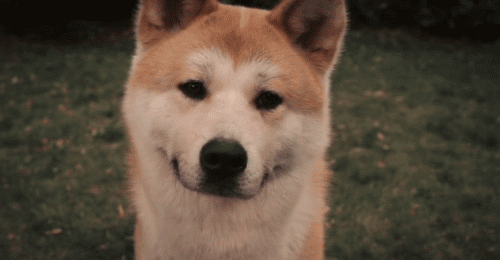
hond (m)
(Dutch)
.
perro (m)
(Spanish)
.
개
(Korean)
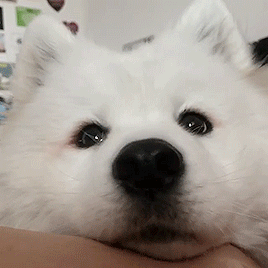
ʻīlio
(Hawaiian)
.
cane (m)
(Italian)
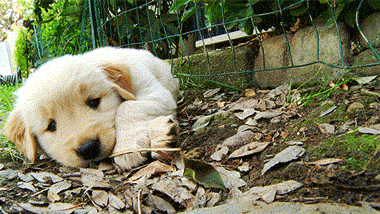
#word of the day#langblr#czech#french#dutch#spanish#korean#hawaiian#italian#czech vocabulary#french vocabulary#dutch vocabulary#spanish vocabulary#korean vocabulary#hawaiian vocabulary#italian vocabulary#vocab#vocab list#vocabulary#vocabulary list#czech langblr#french langblr#dutch langblr#spanish langblr#multilingual#language#polyglot#studyblr#dutch language#languages
15 notes
·
View notes
Text
Duolingo Alternatives by Language
Disclaimer: I haven't used or tested all of them. All resources have different strengths, e.g. Drops being designed for vocabulary. They often aren't full alternatives for Duolingo or formal classes. I just wanted to compile resources for all languages on Duolingo to make the switch easier, especially for the less popular languages.
Feel free to also check out my collection of free textbooks
If you want a more detailed resource list for any of these languages (or perhaps one not listed here) you can send me an ask and I can see what I can do.
Arabic
AlifBee
Arabic Unlocked
Beelinguapp
Bluebird
Busuu
Clozemaster
Drops
Infinite Arabic
Ling
LinGo Play
LingQ
Mango
Mondly
Qlango
Write It! Arabic
Catalan
Bluebird
Clozemaster
Drops
Ling
LinGo Play
LingQ
LyricsTraining
Mondly
Qlango
Chinese
Bluebird
Beelinguapp
Bunpo
Busuu
Chineasy
Clozemaster
Drops
Du Chinese
Hello Chinese
HeyChina
Immersive Chinese
Infinite Chinese
Ling
Lingodeer
LinGo Play
Lingopie
LingQ
Mango
Mondly
Pleco Chinese Dictionary
Qlango
Czech
Bluebird
Clozemaster
Ling
LinGo Play
Mango
Mondly
Qlango
Danish
Babbel
Bluebird
Clozemaster
Drops
Ling
LinGo Play
Lingvist
LingQ
Mango
Mondly
Qlango
Dutch
Babbel
Bluebird
Busuu
Clozemaster
Drops
Ling
LinGo Play
Lingvist
LingQ
LyricsTraining
Mango
Mondly
Say Something in Dutch
Qlango
Esperanto
Clozemaster
Drops
Esperanto12.net
Kurso de Esperanto
LingQ
Qlango
Finnish
Bluebird
Clozemaster
Drops
Ling
LinGo Play
LingQ
LyricsTraining
Mango
Mondly
Qlango
French
Babbel
Bluebird
Beelinguapp
Bunpo
Busuu
Clozemaster
Collins French Dictionary
Conjuu
Dr French
Drops
HeyFrance
Infinite French
Lilata
Ling
Linga
Lingodeer
LinGo Play
Lingopie
Lingvist
LingQ
Listen Up
LyricsTraining
Mango
Mondly
Nextlingua
Oxford French Dictionary
Qlango
TV5MONDE
Xeropan
German
Babbel
Bluebird
Beelinguapp
Bunpo
Busuu
Clozemaster
Collins German Dictionary
Conjuu
Drops
DW Learn German
Infinite German
Ling
Linga
Lingodeer
Lingopie
LinGo Play
Lingvist
LingQ
LyricsTraining
Mango
Mondly
Nextlingua
Oxford German Dictionary
Qlango
Xeropan
Greek
Bluebird
Clozemaster
Drops
Greek Alphabet Academy
Ling
LinGo Play
LingQ
Mango
Mondly
Qlango
Write It! Greek
Guaraní
Clozemaster
Guarani Ayvu
Haitian Creole
Bluebird
Mango
Hawaiian
Drops
Mango
ʻŌlelo Online
Hebrew
Bluebird
Clozemaster
Drops
Ling
LinGo Play
LingQ
Mango
Mondly
Shepha
Write It! Hebrew
High Valyrian
Valyrian Dictionary
Hindi
Bhasha
Bluebird
Beelinguapp
Clozemaster
Drops
Hindwi Dictionary
Ling
LinGo Play
LingQ
Mango
Mondly
Qlango
Hungarian
Bluebird
Clozemaster
Drops
Ling
LinGo Play
LingQ
Mango
Mondly
Qlango
Indonesian
Babbel
Bluebird
Clozemaster
Drops
Ling
LinGo Play
LingQ
Mango
Mondly
Irish
Bluebird
Clozemaster
Collins Irish Dictionary
Drops
Easy Irish
Ling
Mango
Teanglann
Italian
Babbel
Beelinguapp
Bluebird
Bunpo
Busuu
Clozemaster
Collins Italian Dictionary
Conjuu
Drops
Infinite Italian
Ling
Linga
Lingodeer
Lingopie
LinGo Play
Lingvist
LingQ
LyricsTraining
Mango
Mondly
Nextlingua
Oxford Italian Dictionary
Qlango
Japanese
Beelinguapp
Bluebird
Bunpo
Busuu
Clozemaster
Drops
HeyJapan
Hiragana Quest
Infinite Japanese
kawaiiDungeon
Ling
Lingodeer
Lingopie
Lingvist
LingQ
LyricsTraining
Mango
Mondly
Oyomi Japanese Reader
renshuu
Takoboto Japanese Dictionary
Todaii
Qlango
Write It! Japanese
Klingon
boQwl! Klingon Language
Klingon Translator
Write It! Klingon
Korean
Beelinguapp
Bluebird
Bunpo
Busuu
Clozemaster
Drops
Hangul Quest
HeyKorea
Infinite Korean
Ling
LinGo Play
Lingopie
Lingodeer
Lingvist
LingQ
Mango
Mondly
Qlango
Write It! Korean
Latin
Bluebird
Cattus
Clozemaster
Collins Latin Dictionary
Grammaticus Maximus
Latinia
Legentibus
LingQ
Mango
Mondly
Perdisco
Qlango
Vice Verba
Navajo
Navajo Language Renaissance
Navajo Language Program
Speak Navajo
Norwegian
Babbel
Bluebird
Clozemaster
Drops
Ling
LinGo Play
Lingvist
LingQ
Mango
Mondly
Mjolnir Norwegian
Norskappen
Qlango
Polish
Babbel
Bluebird
Busuu
Clozemaster
Drops
Ling
LinGo Play
Lingvist
LingQ
LyricsTraining
Mango
Mondly
Qlango
Portuguese
Babbel
Beelinguapp
Bluebird
Bunpo
Busuu
Clozemaster
Collins Portuguese Dictionary
Drops
Infinite Portuguese
Ling
Lingodeer
Lingopie
LinGo Play
Lingvist
LingQ
LyricsTraining
Mango
Mondly
Nextlingua
Qlango
Romanian
Bluebird
Clozemaster
Drops
Ling
LinGo Play
LingQ
Mango
Mondly
Qlango
Russian
Babbel
Bluebird
Beelinguapp
Busuu
Clozemaster
Collins Russian Dictionary
Drops
Infinite Russian
Ling
Linga
LinGo Play
Lingopie
Lingodeer
Lingvist
LingQ
Mango
Mondly
Nextlingua
Qlango
Write It! Russian
Scottish Gaelic
Bluebird
Clozemaster
Go!Gaelic
Mango
Spanish
Babbel
Beelinguapp
Bluebird
Bunpo
Busuu
Clozemaster
Collins Spanish Dictionary
ConjuGato
Conjuu
Drops
Infinite Spanish
Ling
Linga
Lingodeer
LinGo Play
Lingvist
LingQ
Listen Up
LyricsTraining
Mango
Mondly
Nextlingua
Say Something in Spanish
SpanishDict
Qlango
Xeropan
Swahili
Bluebird
Bui Bui Swahili App
Clozemaster
Drops
Ling
LinGo Play
LingQ
Mango
Nkenne
Swedish
Babbel
Beelinguapp
Bluebird
Clozemaster
Drops
Ling
LinGo Play
Lingvist
LingQ
LyricsTraining
Mango
Mondly
Qlango
Turkish
Babbel
Beelinguapp
Bluebird
Busuu
Clozemaster
Drops
Ling
LinGo Play
LingQ
LyricsTraining
Mango
Mondly
Qlango
Ukrainian
Bluebird
Clozemaster
Drops
Ling
LinGo Play
LingQ
Mango
Mondly
Mova Ukrainian
Qlango
Speak Ukrainian
Vietnamese
Bluebird
Clozemaster
Collins Vietnamese Dictionary
Drops
Learn Vietnamese with Annie
Ling
Lingodeer
LinGo Play
Mango
Mondly
Welsh
BBc Cymru Fyw
Bluebird
Clozemaster
Say Something in Welsh
Yiddish
Bluebird
Clozemaster
Mango
Proste Yiddish
Roni Gal Learn Yiddish
Vaybertaytsh
Yiddish Book Center
Zulu
Bluebird
Nkenne
Bonus: Polygloss which claims to be available for all languages as long as there is another user also learning the same language
7K notes
·
View notes
Note
Max I have a linguistics question. And I will even free your chess ask from purgatory as payment. So there's this thing that goes around saying that US English pronunciations are more similar to old English than British English. Is there any truth to this, and how would we know one way or the other?
There is some kernel of truth in it that is getting exaggerated or oversimplified.
Let me start off by answering, in a general sense, the question "how would we know one way or the other?"
The Part Where I Accidentally (on Purpose) Wrote a Brief Introduction to Historical Linguistics
Phonological change (change in the pronunciation of a language) doesn't work in the way we might naively expect it to. I think that most people imagine phonological change as basically happening by way of each word in the language taking a random walk through pronunciation-space as time goes along. Like genes in a genome, randomly mutating. This is not what happens. Rather, phonological change occurs via rewrite rules, which find-and-replace particular sequences of sounds in a systematic way across the entire lexicon. For example, such a rule might replace a [t] sound with an [s] sound whenever it precedes an [i] sound. This will occur in all words in the language at once, in a uniform way. These find-and-replace rules are called regular sound changes, and they pile up over time, constituting phonological change.
This fact—the regularity of sound change—is known as the Neogrammarian hypothesis.
The above picture is an oversimplification. There are a variety of exceptions and apparent-exceptions to the regularity of sound change, and dealing with them is one of the major challenges of historical linguistics. But as a model, the Neogrammarian hypothesis is extraordinarily powerful. It is literally what makes historical linguistics possible at all. The upshot of the Neogrammarian hypothesis is that when two languages are related, their vocabulary won't just be "kinda similar" in some nebulous sense, it will demonstrate systematic, predictable correspondences in sound between cognate vocabulary.
Here's an illustration of this, a comparative table of some cognates in Polynesian (from Wikipedia):
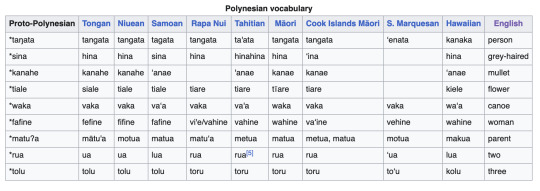
If you look at any two columns of this table, you'll start to notice correspondences. Tongan and Niuean /k/ correspond to Samoan /ʔ/ (a glottal stop, written with a apostrophe). This correspondence is one-to-one. Samoan /s/ corresponds to Tongan and Niuean /h/, but the reverse is not true: some instances of Tongan and Niuean /h/ correspond to Samoan ∅ (nothing). Tongan /s/, on the other hand, corresponds to Niuean and Samoan /t/, but only before /i/. Etc. etc.
These are systematic sound correspondences, born of Neogrammarian sound change from a common ancestor.
Ok, on the left hand side you will notice a column that says "Proto-Polynesian". The words in this column are all marked with *, indicating that they are reconstructed forms. They are linguists' best guess as to what the original, ancestral form of these words would have been in the Polynesian languages' common ancestor. There are various ways linguists make these reconstructions. First of all, we can do it by sheer majority rule: if most of the languages in a family reflect a sound as X, and only one or a few reflect it as Y, then (all else being equal and assuming the tree is flat) it is more likely that the original word had X. Almost all these languages have /t/ as the first sound in "person" (row 1), whereas Marquesan has /ʔ/ and Hawaiian has /k/. Thus the ancestral sound is reconstructed as /t/.
But there are other, more sophisticated tools that can be used. For instance, we know a certain amount about what sorts of sound changes are likely to occur and what sorts are not. Thus, for instance, an /s/ is reconstructed as the first sound in "grey haired" (row 2), even though the majority of languages have /h/. This is because we already know that s -> h is a fairly common sound change (and indeed corresponds to a known phonological process found presently in many languages—debuccalization), whereas h -> s is a much rarer change (in fact, I suspect wholly unattested), and corresponds to no known phonological process or phonetic explanation.
Finally, we can rule out reconstructions when the sound change needed to create them would not be a function. Consider, for instance, that the majority of the words in row 3 have no consonant sound at all before the final /e/. But the reconstruction features a consonant /h/ there. If we posit ∅ as initial instead, we have to come up with a sound change that explains how the /h/ got there. ∅ -> h doesn't work, because that would put /h/ everywhere! How about something like "∅ -> h between two vowels" (linguists would notate this change as ∅ -> h / V_V). That would work, but we see other instances of adjacent vowels (e.g. in row 4) with no /h/ between them, so that can't be it. Maybe "∅ -> h between /a/ and /e/" (∅ -> h / a_e). We can't rule this out on the basis of this chart, but we probably could by looking at more vocabulary.
And so on, and so forth. In general, we want to posit the simplest set of sound changes possible, in which the changes themselves are as probable as possible, in order to explain the data. These putative changes can then by checked against all sorts of outside observations, such as
descriptions of pronunciations in historical texts
past loanwords into languages whose phonological histories are already known with confidence
epigraphic data from archeology (not very applicable to Polynesian, unless we decipher rongorongo)
newly collected data from modern languages in the same family
evidence from rhyme schemes or alliteration schemes used in poetry composed in the past
etc.
to see if they hold up.
The Part Where I Answer Your Question
Ok, right. American English and "British English" (I assume this means Received Pronunciation) are two related language varieties. Thus, they share systematic sound correspondences, and we can try to reconstruct their common ancestor. Also the British Isles have produced an extraordinary number of texts in the past thousand years, including poetry and actual linguistic descriptions of various dialects at various points in time, which we can check these reconstructions against.
But actually you don't need most of that to identify a few ways in which (most) American English dialects are more conservative than Received Pronunciation. For one, Received Pronunciation has dropped /r/ at the end of a syllable (in English dialectological jargon it is "non-rhotic"), whereas General American English hasn't. There are some associated vowel changes too. One way or another, the /r/ is plainly original: elision of /r/ is more common and phonetically plausible than insertion of /r/ in a bunch of specific post-vocalic positions would be, /r/ is written in the orthography, historical descriptions of the language talk about an /r/ sound, etc. etc.
In other ways RP is more conservative. For example, GenAm has deleted /j/ (the "y" sound) in a specific phonological environment ([+coronal]_u) in words such as tube, GenAm /tuːb/, RP /tjuːb/.
Is "American English more conservative than RP" overall? I don't really think so. Certainly it has preserved a number of salient features that RP has lost, such as syllable-final /r/ and (in some dialects) /hw/ in words like what, and so on. But there's other senses in which RP is more conservative. And this is not even to mention the other dialects of Britain, which are manifold and much more diverse than the dialects of America. As to the strict question of the relative phonological conservatism of GenAm and RP, I think someone with more detailed knowledge of English historical phonological would have to come in and answer. Perhaps @yeli-renrong can comment.
705 notes
·
View notes
Text
Loanwords in Finnish 🇫🇮
Many say that Finnish is a language that coins new words from already existing ones rather borrowing from other languages. But there are still loan words in the language nevertheless, especially lately with English dominance as the global language.
Around 26.3 % of all finnish vocabulary is borrowed from other languages;
70.6 % Germanic (Swedish, Proto Germanic, Old Swedish, Old Norse, English, Low German)
14.4 % Balto-Slavic
15 % Other ( Proto-Indo-European, Indo-Iranian, Saami, and unknown origin)
26.3 % is an above average score when it comes to the number of borrowed words. Other languages for comparison
Romanian 41.8 %
English 41 %
Japanese 34.9 %
Finnish 26.3 %
Dutch 19.1 %
Hawaiian 13.6 %
Mandarin Chinese 1.2 %
🇫🇮 sänky (bed) ← source word Old Norse sæing (other cognates; 🇪🇪 🇸🇪 säng, 🇳🇴 🇩🇰 seng)
🇫🇮 äiti (mother) ← source word Proto-Germanic aiþį̄ (other cognates; 🇪🇪 eit, 🇮🇸 eiða)
🇫🇮 sielu (soul) ← source word Proto Germanic saiwalō (other cognates; 🏴 soul, 🇸🇪 själ, 🇮🇸 sál, 🇳🇴 sjel, 🇩🇰 sjæl, 🇩🇪 Seele, 🇳🇱 ziel)
🇫🇮 kirkko (church) ← source word Koine Greek κυριακὸν (kuriakòn) (other cognates; 🏴 church, 🇪🇪 kirik, 🇮🇸 kirkju, 🇸🇪 kyrka, 🇳🇴 🇩🇰 kirke, 🇩🇪 Kirche, 🇳🇱 kerk, 🇷🇺 ки́рха (kírxa), це́рковь (cérkovʹ), 🇵🇱 cerkiew)
🇫🇮 joulu (christmas), juhla (party, celebration) ← source word Proto Germanic jehwlą (other cognates; 🏴 Yule, 🇪🇪 jõulud 🇮🇸 jól, 🇸🇪 🇳🇴 🇩🇰 jul, 🇩🇪 Jul 🇳🇱 joel)
🇫🇮 herra (sir) ← source word hērro (other cognates; 🏴 hoar 🇪🇪 härra, 🇮🇸 herra, 🇸🇪 🇳🇴 🇩🇰 herre, 🇩🇪 Herr, 🇳🇱 heer
🇫🇮 kellari (basement) ← source word - cellārium (other cognates; 🏴 cellar, 🇪🇪 kelder, 🇮🇸 kjallara, 🇸🇪 källare, 🇳🇴 kjeller, 🇩🇰 kælder, 🇩🇪 Keller, 🇳🇱 kelder, 🇫🇷 cellier, 🇪🇸 cillero)
🇫🇮 rengas (ring) ← source word Proto-Germanic hrengaz (other cognates; 🇮🇸 hringur, 🇫🇴 ringur, 🏴 ring. 🇩🇪 Ring, 🇳�� 🇸🇪 🇳🇴 🇩🇰 ring, 🇫🇷 harangue, 🇮🇹 arengo)
🇫🇮 miekka (sword) ← source word (other cognates; 🏴 meak (scythe), 🇪🇪 mõõk, 🇮🇸 mækir, 🇷🇺 меч (mech), 🇵🇱 miecz)
Other non-onbious loan words I could find include; helvetti, kuningas, juusto, aukko, äyri, lyydi, huilata, tila, mursu, vesi, katu, porsas, hylly, kaupunki, peili, ranta, puhvi, peti, patja
source; https://lucris.lub.lu.se/ws/portalfiles/portal/118581152/220419_Emprunts_lexicaux_Finnois_Aix_Marseille_.pdf
#linguistics#etymology#loanwords#finnish#icelandic#danish#english#language#swedish#norwegian#dutch#english language#german#estonian
51 notes
·
View notes
Text
As promised (since I'm late sorry 😭) Snippet 5 of ❤️🔥Violent Heart❤️🔥 aka stepdad!mechanic!convict!joel x afab!reader fic


I SWEAR I WROTE THIS BEFORE HE WORE THIS OUTFIT ON GOD I LITERALLY SPOKE IT INTO EXISTENCE YOU CAN THANK ME BELOW 👇
Warnings: Nothing crazy just joel admiration and dressing him up 😍
Context: Joel is Y/N's ex step-father. He just got out of prison for killing David and Y/N (age 20) takes Joel shopping for a new wardrobe.
HERE IS A LINK TO A MASTERLIST OF VIolent Heart STUFF TO TIDE YOU OVER
You take Joel shopping. At his insistence it is nothing fancy, just the local department store. That doesn’t stop you from dressing Joel up in ridiculous outfits of your choosing. You make him try on a hawaiian shirt, some golf polos like your dad liked to wear, a pinstripe suit and he lets you because saying no to you has never been in his vocabulary. He acts grumpy on the outside, but you can tell he is amused. You know in the end you’ll just end up buying every flannel shirt and jeans combo they have in the store, but it’s just fun anyway. You watch the fabric hug his torso, his tummy, the slight bulge at his waist. At one point he comes out shirtless and you try very hard not to swoon as you stare at the hair lining his chest and his adorable little tummy that you for some reason have the urge to bite. The band of his Hanes boxers sticks up past his jeans and he looks so good. He even lets out a genuine smile. The middle-aged sales attendant who is helping you even takes a good look at him which makes the butterflies inside you swarm possessively.
Finally you make him try on a proper white-collared button-down shirt and black dress pants with matching black shoes and he looks so good you’re actually at a loss for words when he asks you what you think. They hug the curves and lines and planes of his body so nicely. All you can do is ask him to put on a black tie to match and he does at your behest following some customary griping that he would never wear such a monkey suit in the first place. The effect that a fully dressed up Joel has on you is not one to be reckoned with. He might as well be wearing the mens version of lingerie for how it makes you throb and ache between your legs. He looks like a force of nature, commanding and tall. It makes you weak. All you say is,
“Looking good, old-timer.”
He snorts.
HERE IS A LINK TO A MASTERLIST OF VIolent Heart STUFF TO TIDE YOU OVER
#ao3#fanfiction#joel miller#the last of us#tlou#joel miller x reader#joel miller x you#joel miller/you#joel miller/reader#joel miller fanfiction#tlou fanfic#tlou joel#stepdad!joel#stepdad!joel m#stepdad joel#mechanic!joel#mechanic!joel miller#dark joel miller#dark!joel miller#dark joel#the last of us fanfiction#the last of us smut#joel miller imagine#joel miller smut#dark fic#pedro pascal
49 notes
·
View notes
Text
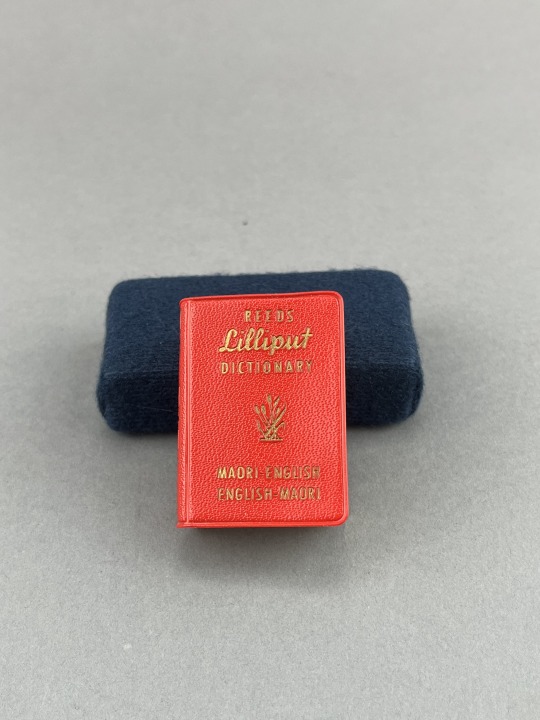
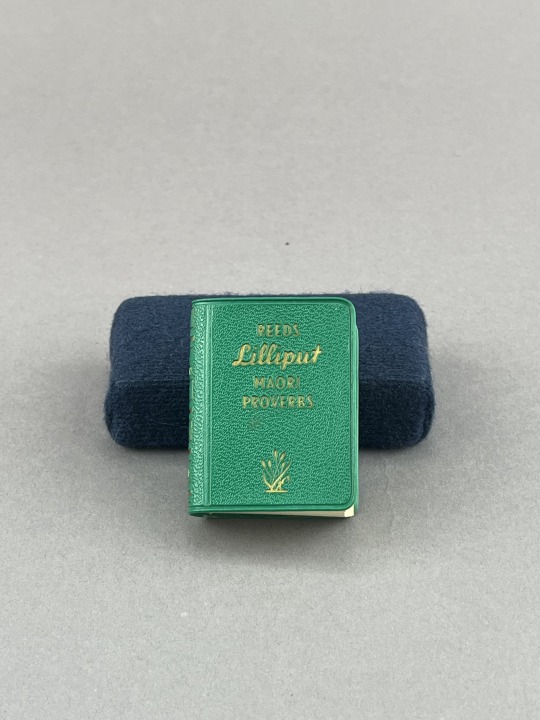

#MiniatureMonday
Happy Māori Language Week from Special Collections & Archives!
Te Wiki o te Reo Māori, Maori Language Week, is celebrated annually the week of September 14th to commemorate Te Wā Tuku Reo Māori, the Maori Language Moment, which stamps the presentation of the Maori Language Petition in New Zealand at 12 pm on September 14, 1972.
Te Reo Māori is the language of New Zealand's Indigenous Maori people. It is a part of the Austronesian language family and shares its roots with other island languages including Tahitian and Hawaiian. The celebration of Te Wiki is rooted deeply in efforts to revitalize the Māori language after years of the speaking and use of te reo was banned in schools. Today, te reo Māori is the official language of New Zealand, or Aotearoa as it is called by the Indigenous people. It has become increasingly used in New Zealand society, culture, and professional institutions. The Māori language has also become something of global interest, with the popularization of the language through its presence in music, film, television, and sports commentary.
In the United States, Polynesians as a whole make up less than half of a percent of the American population, with Māori people as one of the smallest migrant populations. Still, for those living abroad or interested in learning the language from afar, the language revitalization movement has certainly spread to the United States, along with its learning materials and resources.
There is a Māori proverb that reads ahakoa he iti he pounamu, "although it is small, it is greenstone." This refers to the importance of things small but precious, such as these miniatures!
The Reeds' Lilliput Māori dictionary and Reeds' Lilliput Māori proverbs live in Special Collections as part of the Smith Miniature Book Collection. These 5cm tall miniature books were published by A.W. Reed in the early 1960s, the dictionary in 1960 as part of a collection of miniature dictionaries made popular by other global publishers. The book of whakatauki, Māori proverbs, joined the mini-dictionary in 1964. Other language dictionaries include Spanish, French, and Romanian. Due to their size, it is likely that these books were made to entertain more so than educate. Still, they are certainly one of the many taonga, treasures, of Special Collections.
Te Wiki o te Reo Māori 2023 begins Monday, September 11, and concludes Sunday, September 17. Celebrate through songs, stories, conversations, or by learning some library-related Māori vocabulary! You can also visit the University of Iowa LibGuide on learning beginner's te reo Māori.
NGĀ KUPU WHARE PUKAPUKA LIBRARY VOCABULARY
pukapuka book
pūranga archive
whakaputunga collection
kaitiaki pukapuka librarian
wāhi tuku pukapuka reference desk
pānui to read
ako to learn
--From M Clark, Instruction GA
Reeds' proverbs (SMITH PL6465.Z77 .R44 1964) and Reeds' dictionary (SMITH PL6465.Z5 .R44 1960)
#uiowa#special collections#miniaturemonday#uiowaspecialcollections#rare books#library#maori culture#te reo maori#proverbs#new zealand
86 notes
·
View notes
Note
lilo and stitch anime??? I thought u guys were referring to the tv series?? I'm so confused
//There's One TV Series and Two Animes.

//The TV Series is the first and the one you are probably thinking of which is when Lilo and Stitch go to capture all the remaining 622 experiments that Jumba made, which came out between 2003 and 2006. Which side note no we don't have 622 episodes and not all the experiments do show up which is a massive bummer. But I remember watching this as a kid and loving it.
//The Experiments are a MAJOR influence into my general creature design thought process in general so if some of the future Void Juice Monsters look familiar that's why.
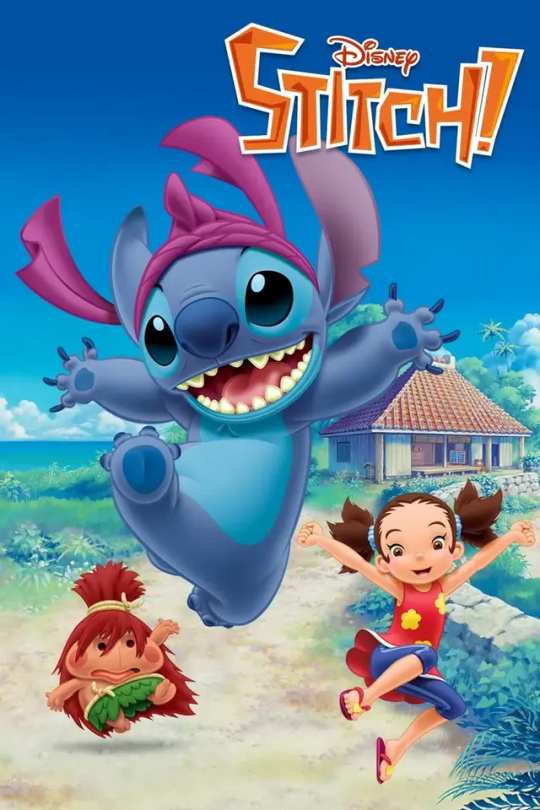
//Then you have Stitch! The anime which came out in 2008 and 2011. This takes place in the future when Lilo is all grown up and Stitch has found some new friends in Yuna a Japanese-Hawaiian girl and one who wouldn't be out of place in Pokemon Sun and Moon, and Kijimunaa a youkai. Yep because having alien experiments isn't good enough, we also have some good old Japanese supernatural beasts as well. The plot is Stitch attacked a spiritual stone to make a wish to get stronger but for it to work he needs to do 43 good deeds which since losing Lilo has made Stitch regress a bit means he and Yuna have to make sure he gets good again.
//I haven't seen many of the episodes but I probably need to watch them at some point. I do know Stitch's English vocabulary is much better here as he actually talks in proper sentences now. I understand why since its in the future and all, but it just feels weird he's not talking gibberish all the time, and there is a episode when we see Lilo and....well...let's just say most people aren't happy how she's portrayed in this.
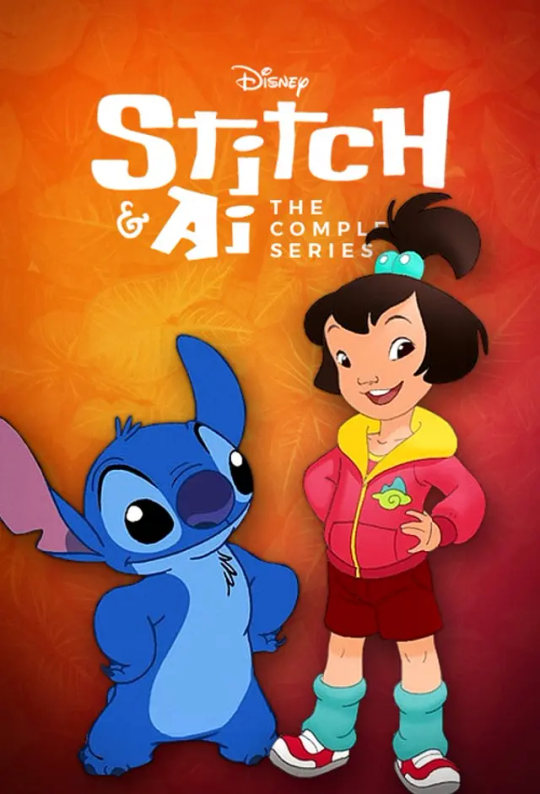
//And finally you have Stitch and Ai, the most recent one as it came out in 2018 though it was a year eariler for Chinese auidences. To the surprise of literally nobody, this was a TV series designed to cater to the Chinese market as Stitch finds himself in China and befriends another young girl, named Ai who is basically Chinese Lilo. This also takes place after Leroy and Stitch but seems to be be in a seperate timeline to Stitch! Here Stitch is being hunted by two alien factions who want to use a hidden feature in him to win the war they are having with each other and its up to Stitch and Ai to keep away from them.
//Oh that hidden feature Stitch has? It's the Kaiju form I talked about and well;
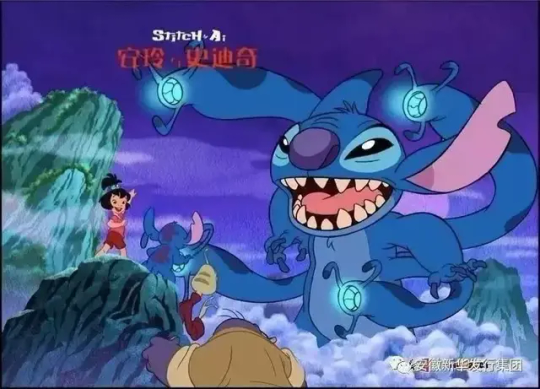
//That is...something alright.
//So yeah that's all the TV Series/Anime Stitch has Sparkles. Its a LOT.
#review anon talks#sprykle4#for clarity sake#one is done by japan#one is done by china#which is simple enough to tell the difference#like i haven't watched much of either#so i can't hold too much of a opinion#stitch is a interesting aspect and yuna is clearly not the same as lilo#whereas ai is literally china saying we have lilo at home#so depends on opinions
2 notes
·
View notes
Text
KE AUPUNI UPDATE - SEPTEMBER 2024

Making Our Country Visible! You’ve heard the adage, “Out of sight, out of mind”? One of the biggest problems we face in reactivating the Hawaiian Kingdom is, because most people don’t “see” the Hawaiian Kingdom, they think it no longer exists! When people think of the Kingdom as something of the past, not in the here and now or in the future, it’s hard for them to support (or even care about) a nation they canʻt “see” in the here and now. But when you stop to think about it, the Kingdom did not go away. It’s all still here! — the land, the sea, the places, the people, the history, the legacy of Aloha remain. Only the name (the State of Hawaii), the people who run it (Americans) and the style they use, changed. Underneath that haole façade is still the Hawaiian soul and the deep culture of Kapu Aloha! How do we reset our minds to raise up our still existing nation? • By embracing the fact that we are Hawaiians, not Americans. • By dropping words like “mainland” from our vocabulary… • By focusing our thoughts that we are living everyday, every moment in the Hawaiian Kingdom, • By welcoming the return of the Hawaiian Kingdom as a sovereign nation, • By inviting everyone from near and far, to join in CELEBRATING the return of the Hawaiian Kingdom! Building Confidence! Many say they would like Hawaii to be independent, but deep down don’t think it can really happen. And there are those who think, that even if we can become politically independent, we are not capable of governing, operating, or protecting our country. We need a celebration to build up confidence in our people and dispel those doubts! • A celebration of the Hawaiian Kingdom as a living nation will build a sense of identity and purpose... and bolster confidence among the people! • Taking the celebration global, will allow others to “see” our nation and get excited that this is really happening! • The celebration will bring forward a vision and roadmap for the future of Hawaii creating momentum and a snowball effect to realizing independence. Other Benefits: Even if people know we exist, they may not know there is a strong movement to actively pursue independence. This celebration will give us an opportunity to bring greater awareness to the movement to free Hawaii and provide a platform to demonstrate our political will for a Free Hawaii. Will the US agree to pull out? YES! ... and this celebration will help to give the U.S. the necessary encouragement to do the right thing. Is there a plan in place to make a peaceful, orderly transition? YES! ... and this celebration provides an opportunity to work out a road map on how to restore our nation with wide participation from our friends from all over the world.
“Love of country is deep-seated in the breast of every Hawaiian, whatever his station.” — Queen Liliʻuokalani ---------- Ua mau ke ea o ka ʻāina i ka pono. The sovereignty of the land is perpetuated in righteousness. ------ For the latest news and developments about our progress at the United Nations in both New York and Geneva, tune in to Free Hawaii News at 6 PM the first Friday of each month on ʻŌlelo Television, Channel 53. ------ "And remember, for the latest updates and information about the Hawaiian Kingdom check out the twice-a-month Ke Aupuni Updates published online on Facebook and other social media." PLEASE KŌKUA… Your kōkua, large or small, is vital to this effort... To contribute, go to: • GoFundMe – CAMPAIGN TO FREE HAWAII • PayPal – use account email: [email protected] • Other – To contribute in other ways (airline miles, travel vouchers, volunteer services, etc...) email us at: [email protected] All proceeds are used to help the cause. MAHALO! Malama Pono,
Leon Siu
Hawaiian National
2 notes
·
View notes
Text
Okay, how do I do this,
Let's see uh
Okay I have nothing to copy and paste really, so I'm just going to write from scratch. Bear with me.
Hiiiii I'm Edmund Endless. I'm 18, as of last February. Seems important to put out into the world.
I'm a little weirdo. Or, well a tall one according to some people (is 5'8" tall?), But either way, I fully admit that I am in fact rejecting the term normal when it comes to my identity. I'm in fact very eccentric in between the fact that I consider things like slacks to be casual pants and almost always wear some kind of Hawaiian shirt out in public because I like the design of a short sleeve button up with desgny stuff, that definitely counts.
As far as hobbies go, I've had a bit of time to accumulate some, such as being an artist on paper and digitally, a rudimentary writer in the works, and then I look cooking and playing Minecraft (I am most certainly not a gamer but that will hopefully be something I can work on)
I also like to dress super femme [though, also, I see clothing as a thing all should be able to enjoy free of gendered norms, sooo-]. So far not anything huge since I'm working on getting a job as we speak, but once I have money flowing in, I plan to do more. I think skirts, fishnets, and makeup are all amazing things, and that's not even the start of it.
Edit: I've been considering Gothic Victorian attire... I think it's also called Gothic Lolita? Outfits I've found look cute and i wish I had them now-
Anyway, as mentioned in my blurb at the top, I am neurodivergent. As far as I know I Do have an official diagnosis but I don't know where they are because I was not the one who got them- but anyway I have Autism and ADHD. I like to think of them as additional overlays over my brain (I imagine ADHD as like the weird additional RAM space over with my left hemisphere for example) that have a few drawbacks but generally make me who I am. Everyone is a unique individual and I think that's one of the best things ;]
Formerly I was a proud owner of a surprisingly old cockatiel whom I love and cherish- he got to be 31, nearly 32, this year. And throughout the last summer, I also care for two cats- neither of which have any problem with my bird. Usually it's more a concern of if he'll bite them lol
Since my birds passing I've adopted two rescues who needed a new person and while they're not fully tamed yet, we all enjoy each other and I hope to further the bond with time and effort.
Anyway it's a fair warning that because of that I may or may not understand certain social cues, sarcasm, certain jokes, etc. I definitely understand text tones a little better even before people started employing the /srs or whatever stuff, but it's better to put that out there. I can also be a little blunt, but between autism and experiences, I do try to not be harsh if I can.
Anyway I'm running out of long things to list so I'm just going to put some additional facts down here
- I currently have at least one experience working on an alpaca farm, and as a result I have a couple vague understandings of the stuff that goes on there and why they're quite profitable.
- I really really want to dye a bit of my hair hot pink. I think it would be awesome and very outside the box. [Edit: I DID IT! I'M GONNA DO IT AGAIN eventually]
- I like scary stuff and I like silly stuff, and I especially like it when both are involved. Mainly because I see a lot of the same humor nowadays and horror doesn't always phase me (I was one of those kids who got into FNAF when I was younger so a lot of the feeling of being scared over those kind of things desensitized me a little.)
- I at one point wanted to be a YouTuber as a career, but most likely that will not happen due to the ridiculousness of the platform not likely going to mesh very well with my vocabulary at least half the time consisting of Fuck here and there- which is to say I will probably still eventually get back into that because I wanted to post things on there too.
- I've been getting into baking and I really want to try to make creamy jalapeno popper stuffed chocolate donuts from scratch. I also want to make a pizza from scratch :]
- I love Legos and I like making transformers out of them when I can figure out how to do it.
- I like music that is either from the 50s jazz era, older rock, shitposty songs, and then will wood. I/me/myself babyy :D
- I have read the entire Twilight series and shamelessly admit that I used to think it was the coolest thing when I was younger. Not So much Anymore.
- I'm a big fan of books by Rick riordan, James Patterson, and other obscure artists that right strange cool stories- such as The hitchhiker's guide which I also read the entire trilogy of four books.
- for some reason my default thought to looking cooler involves spikes and leather and you know I can't entirely say why. But I think it makes anyone look instantly cooler to be dressed in at least a cool leather jacket and heeled matching boots.
- I am in fact the person behind the two projects R.O.O.T and Enduralt. The former (Root) which I work on more because that's a long-term project and an original project. The other one (Enduralt) was just something me and an old friend kind of jumped back into for fun and I figured I'd keep the ball rolling as long as I can since I felt like it deserved to have its ideas shown in some capacity.
- I have a C shaped spine last I checked. It doesn't affect a whole lot as long as I'm careful, but I think it's an interesting fact to mention.
- through very roundabout means I am related to Johnny Cash, but not by blood.
- at some point I really want to have the space to build the model of an old car but retrofitted for modern road safety stuff since nowadays you need to have at least a partially electric car to drive on the road. I'd like to have mine look nice and cool.
- this probably should have gone upwards by the cake idea but I really like mixing foods together and at some point I intend to create my ultimate burger I've always dreamed of.
- also my favorite color is magenta and I am frustrated that it is hard to find that color in the kind of clothes I like to get because if I could I would have a lot of nice sweaters and skirts and stuff in magenta and it would be amazing-
Anyway, that's all I can think of right now, so unless I something start reblogging and adding more to the list, that's everything relevant. Feel free to ask more about that stuff and I'll tell stories like the weird uncles/dad friend that I am to people.
How the hell do I pin this-
38 notes
·
View notes
Text
My favourite language learning app for building vocabulary.
Drops has helped me to build my irish vocabulary because of the extensive catagories to choose from i can learn what I want to learn. I also find it helpful because in the free version you can only do five minutes a day. I find that for me it keeps me motivated and makes me pay more attention to the words as occasionally you will have to spell them. I personally find the app helpful for adding vocabulary to my knowledge but it does lack grammar and actual sentences.
Theres many different languages on drops and these are:
ainu, arabic, ASL, bosnian, catalan, chinese (cantonese), chinese (mandarin), croatian, danish, dutch, british and american english,
Esperanto, estonian, finnish, french, galician, german, greek, hawaiian, hindi,
hungarian, icelandic, igbo, indonesian, irish, italian, japanese, korean, norweigan,
persian, polish, brazilian portugues, european portugues, romanian, russian,
samoan, sanskrit, serbian, european spanish, mexican spanish, swahili,
swedish, tagalog, te reo maōri, thai, turkish, ukrainian, vietnamese, yoruba
#irish#gaeilge#languages#te reo maori#hungarian#japanese#korean#chinese#mandarin#cantonese#greek#german#deutsch#finnish#swedish#icelandic#norwegian#danish#dutch#catalan#galician#bosnian#russian#ukrainian#serbian#indonesian#vietnamese#portuguese#italian#hindi
14 notes
·
View notes
Text
Word Of The Day - ADVENTURE
dobrodružství (n)
(Czech)
.
aventure (f)
(French)

avontuur (n)
(Dutch)
.
aventura (f)
(Spanish)
.
모험
(Korean)

hana wiwo ‘ole
(Hawaiian)
.
avventura (m)
(Italian)
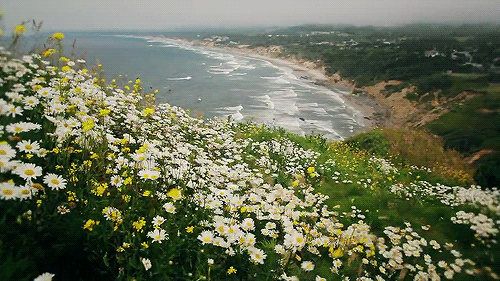
#word of the day#langblr#czech#french#dutch#spanish#korean#hawaiian#italian#czech vocabulary#french vocabulary#dutch vocabulary#spanish vocabulary#korean vocabulary#hawaiian vocabulary#italian vocabulary#vocab#vocab list#vocabulary#vocabulary list#czech langblr#french langblr#dutch langblr#spanish langblr#multilingual#language#polyglot#studyblr#dutch language#languages
6 notes
·
View notes
Text
Etymological Map of America
— Alex | Vivd Maps
America’s rich tapestry of stories is woven into the fabric of its landscape, with many tales embedded in the place names of the cities and states. Understanding the meanings behind these names offers insights into the development of the land, its history, and its culture over the centuries. Not only does this deepen our appreciation of our surroundings, but it also enriches our vocabulary and occasionally aids in solving crossword puzzles, a sentiment strongly endorsed by WordTips.
Take, for example, Missoula, which translates to “River of Ambush” in Montana, evoking memories of inter-tribal conflicts. Similarly, Manchester, New Hampshire, derives its name from “Breast-like Hill,” harking back to the voluptuous mound upon which a Roman fort was constructed around 79 CE in Manchester, UK. Centuries later, Samuel Blodget, inspired by the barge canals of the British Manchester, spearheaded the construction of similar waterways in his New Hampshire town and suggested adopting its namesake.
But what about the rest of the U.S.? Armed with our etymology hats, we delved into dictionary country, scouring sources such as the Bureau of Indian Affairs, the Online Etymology Dictionary, the Encyclopedia Britannica, the American Library Association, and regional news reports. Our quest uncovered the literal meanings behind the names of each U.S. state, its capital city, and 178 of America’s largest cities.
Literal Translations of State Names and Their Capital Cities Across the U.S.
Names sometimes transcend boundaries. Both the state of Kansas and Kansas City, MO, derive their names from the Kansas River, which, in turn, honors the Kanza tribe, translating as ‘People of the Southwind.’
Interestingly, there exists a lesser-known Kansas City within the state of Kansas itself. This city adopted its name from its Missouri counterpart, hoping to leverage the fame of the Missouri town. According to local history teacher Matt Beat, “KCK wanted to capitalize on the success of KCMO and essentially mislead visitors into believing they were in the authentic Kansas City.

While numerous state names honor Native history or describe geographical features, others carry traces of colonial influence. The Carolinas, for instance, owe their name to King Charles II and his father, Charles I. The territory was initially chartered by Charles II, who bestowed the name in honor of his father. Additionally, the capitals of both Carolinas pay homage to European explorers, with Sir Walter Raleigh and Christopher Columbus lending their names to these cities.
The Literal Translation of Major City Names in the Northwestern U.S.
In addition to the straightforward meanings of city names like ‘Anchorage’ (a place suitable for anchoring) and ‘Portland’ (land surrounding a harbor), the Northwestern U.S. boasts some lesser-known etymologies, both of Native and settler origin.
Honolulu, for instance, derives from the Hawaiian language: ‘hono’ meaning ‘port’ and ‘lulu’ meaning ‘calm.’ Interestingly, the name traces back to British Captain William Brown, who initially named the port Fair Haven upon his arrival in 1794. Before this, Hawaiians referred to the area as Ke ʻAwa O Kou, meaning ‘the harbor of Kou.’
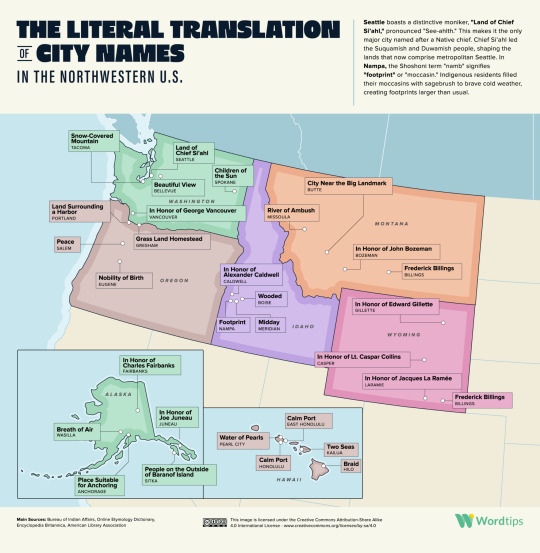
Meanwhile, Boise, Idaho, takes its name from the French word for ‘wooded area.’ However, the name’s origins are influenced by English as well: fur traders passing through the region called it the Wooded River, a name later translated by French trappers.
When surveying the area in the 1830s, the French United States Army officer B.L.E. Bonneville had the final say, choosing French over English.
The Literal Meanings Behind Major City Names in the Southwestern U.S.
Many major cities in the Southwestern U.S. bear names that honor notable individuals. Reno, for instance, pays tribute to Jesse Lee Reno, a Virginia-born Union general who met his demise during the battle of Fox’s Gap. The official announcement regarding the city’s naming stated:
“The name of the new town on the C.P.R.R. at the junction of the contemplated branch road to Virginia City in Nevada, is Reno, in honor of General Reno, who fell gloriously fighting in defense of the flag against the assault of traitors in rebellion.”
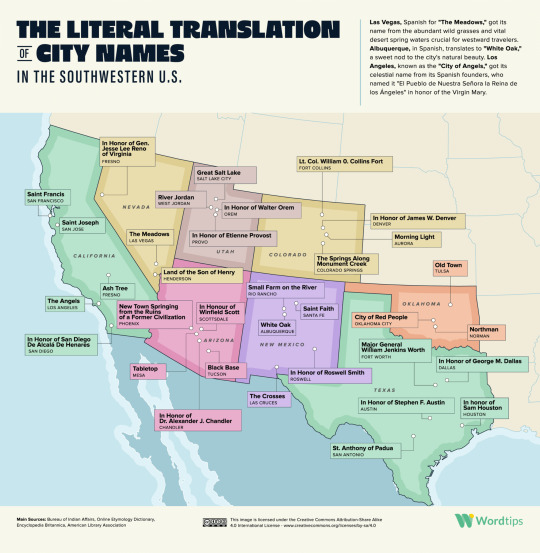
Similarly, Orem, Utah, derives its name from Walter Orem, a prominent figure in mining and railroad development who constructed the state’s inaugural electric railroad. However, the town’s naming was more an act of flattery than gratitude towards Orem’s contributions. In 1919, as the town faced a critical juncture in its expansion efforts, requiring investment for incorporation and the establishment of a networked water system, it was named after Orem in hopes of securing his support. Prior to this, the area had been known as Provo Bench.
The Literal Meanings Behind Major City Names in the Southeastern U.S.
In September 1687, Henri Joutel noted in his writings: “We arrived at the said place called Chicagou which, according to what we were able to learn of it, has taken this name because of the quantity of garlic which grows in the forests in this region.”
Other accounts suggest that the name Chicago may have originated from the Algonquian word sheka:ko:heki, meaning “place of the wild onion,” or possibly from the Ojibwa word for skunk. Regardless of its precise origins, it appears that odor was a prominent characteristic of the area before the establishment of the town of Chicago in 1833.
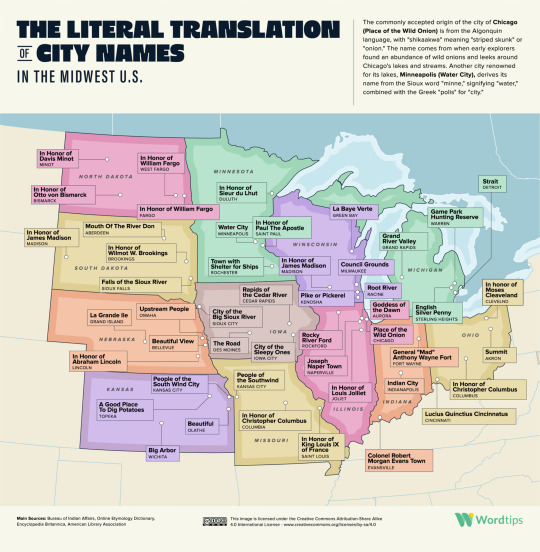
Topeka, on the other hand, translates from the Kansa (Siouan) language as “A Good Place to Dig Potatoes.” The founders chose this name in 1855 with originality in mind. Fry W. Giles, a banker and city founder, described Topeka as “a name not found in the list of post offices of the United States, nor in any lexicon of the English language. It was novel, of Indian origin, and euphonious of sound.”
The Literal Meanings of Major City Names in the Southeastern U.S.
Understanding that Baton Rouge means “red stick” doesn’t require fluency in French. But why was Louisiana named “red stick”? In 1699, French explorer Pierre Le Moyne d’Iberville stumbled upon the area and spotted a reddened pole adorned with sacrificial fish and bear heads by the Native inhabitants. This visual left an impression on d’Iberville, leading him to refer to the area as Baton Rouge when the French colonized it.
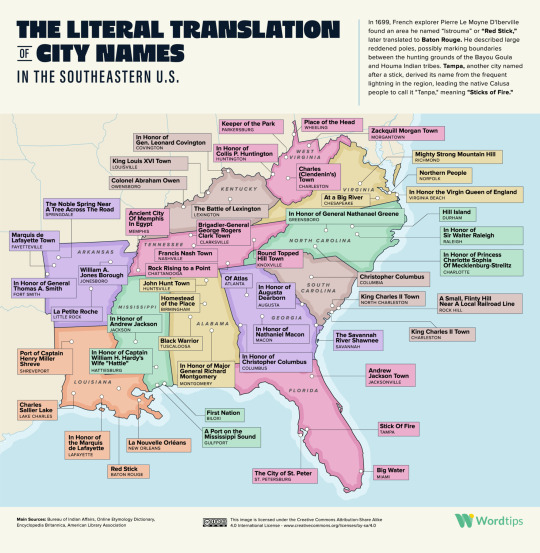
Among the most intriguing place names in the study is Memphis. The city took its name from the ancient Egyptian city of Memphis, which translates to “enduring and beautiful” or “Place of Good Abode,” depending on interpretation. The founders, John Overton, James Winchester, and Andrew Jackson, were less concerned with etymology; they chose the name because both cities stand beside vast rivers.
The Literal Meanings Behind Major City Names in the Northeastern U.S.
Some city name translations in the Northeast are well-known or easy to understand, such as Philadelphia (from the Greek for “brotherly love”) or Portland (the land around a port). Others require a bit more digging.
Would you be able to identify the city name that translates to Botolph’s Stone if it wasn’t labeled on our map? Boston was named after a town in Lincolnshire, England, which, in turn, was named after Botolph, the patron saint of travelers. The second part of the name could derive from “stone” or perhaps from “tun,” the Old English word for village.
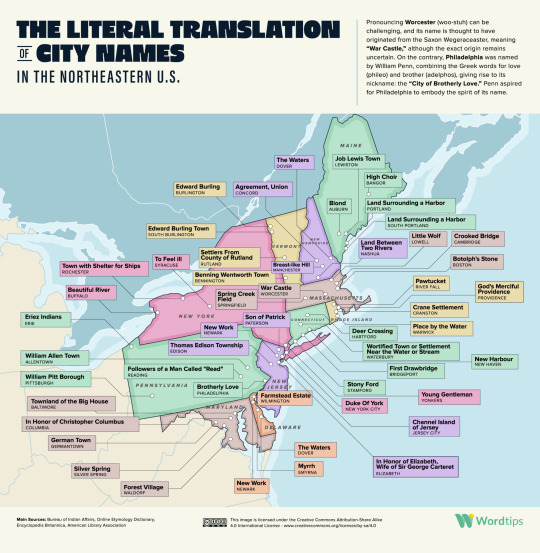
The Dutch colonized New Netherland, which included parts of present-day New York City, Long Island, Connecticut, and New Jersey, with the city of New Amsterdam located on today’s Manhattan Island.
However, in 1664, James II of England, the Duke of York, captured the island, leading to the city receiving its eventual name.
If that sounds odd and European, remember the city was briefly called New Orange when the Dutch briefly recaptured it in 1673.
Methodology:
The WordTips team compiled research from a diverse array of sources, including the Bureau of Indian Affairs, the Online Etymology Dictionary, the Encyclopedia Britannica, the American Library Association, historical records, and regional news reports. The aim was to unveil the literal meanings behind the names of each U.S. state, their respective capital cities, and 178 of the most populated cities scattered across the country.
The investigation delved into various aspects of etymology, considering cases where a state or city was named after a person or significant event, where the words in a location’s name evolved in meaning from an earlier version of English or another language, or according to the significance behind another location after which a U.S. state or city was named.
This project’s research was concluded in January 2024.
3 notes
·
View notes
Text
Conlang Year Catching Up
I just found out a few days ago that @quothalinguist is doing a set of daily prompts to build a conlang over the course of this year. I'm so excited! I've been toying with drafts of a conlang for ages and this structure seems like just what I need to get it finished. I want to catch up as quickly as I can and follow along. So here goes
DAY 1: Set Intentions for your language I’m making the conlang I’ve always wanted but could never find. I wanted a language made like a toy or a game, simple enough to pick up and play with but large and surprising. Something not quite like any language I might learn in school. And I wanted to be able to make weird art with it. I want to write stories and songs and jokes to share with my friends. I’ve tried this with Quenya, Klingon, Esperanto, LFN, and toki pona. But none of them have all the attributes I’m looking for. So I’ve gotta make it myself.
The language I want is:
Simple to pick up and play with, though not necessarily the simplest possible. Any eccentricities should be interesting enough to justify the extra trouble of learning them. To accomplish this the language will be isolating and analytic, much like Mandarin or various creoles or a lingua franca. The phonology will also be minimal, with a small number of sounds and syllable shapes. The romanization should be as intuitive as possible for a reader only familiar with English. I want to be able to tell somebody “say it in an Italian accent and you’re most of the way there.”
Naturalistic, or as naturalistic as can be without getting too complex to start playing with. I’m thinking of it as an “impressionistic” conlang. It aims to capture something of nature with heightened contrast and color in a few bold strokes. To accomplish this I’ll include etymologies and historical sound changes that a learner can ignore if they’re not interested. I’ll put most of the detail into the vocabulary and leave the grammar minimal.
A priori and not directly resembling any familiar language. Even though my fictional speakers are human, I want this language to be distinctly its own and not invite obvious comparisons to other languages, either natural or imagined. One problem with using a small number of sounds and mostly open syllables is that it immediately reminds people of Hawaiian and Japanese. To get around this my standard romanization will use the letters “c” and “v” rather than “k” and “w”. Spelling with “c” also gives me an opportunity to add an extra wrinkle to the constructed script while keeping things intuitive for a learner with no linguistic background.
Most of all, this language should be fun. I want to keep a light tone throughout. I want every passage to be charming to read. I want to write lessons that are a joy to browse through and play with.
3 notes
·
View notes
Note
Just because someone has roots in Hawaiʻi does not make it OK for people to use the term hapa or quapa. Also, what is a quapa.. just goes to show the lack of understanding by outsiders. Hapa already means mixed and is not defined by blood quantum in current Hawaiian language colloquial speaking.
I'm not the one who decides what terms people use. I just know that in mixed Asian communities, especially on the internet, and especially in older forums, this is a term very commonly used. "Quapa" arose from those who identified as "hapa" (in these communities) saying those with less than strictly 50% needed to be called something different.
Until Tumblr, I never heard that anyone was against the words being used that way; because mixed people from Hawai'i were the first to form large communities for mixed Asians, they introduced the word to our vocabulary, and many assumed it was ok to use without knowing the context of its origin. There is ample work to be done educating people that this isn't correct.
"Wasian" and "blasian" were most commonly used in porn, and left too many ethnicities out, creating a need for something more inclusive. And both of those options are sort of like "latinx", which is to say that they're well outside the phonotactic constraints of many Asian languages. I don't think it's right to keep using "hapa" if it's against the wishes of Hawai'ian people, but I don't think it will go away entirely a suitable alternative is found. (which of course doesn't excuse it, I'm just being pragmatic)
3 notes
·
View notes
Note
Describe your character's voice. Do they speak with an accent? Are there certain words they use more often, or certain quirks to the way they talk (such as using filler words or mumbling)? Are they soft-spoken, or typically louder? Do they like the sound of their own voice, or is it something they try to avoid listening to when possible?
[meta]
Native to Hawaii, Cass's first language is actually Hawaiian. As such, she speaks with a Hawaiian accent. This means shortened words and dropped letters. She does use some pidgin words from time to time, but she's gotten out of it since leaving Hawaii, largely because she was conditioned to believe it's 'less proper' and she wants, desperately, to fit in.
Filler words are something she uses a lot of. There are a lot of "likes" and "you knows" in her speech pattern, as well as a lot of milennial/gen z slang. How loud she is depends entirely on who she's talking to -- if it's someone she's comfortable with, she tends to be louder. If it's someone she doesn't know as well, she's more soft-spoken and generally less of herself.
She really doesn't like the sound of her own voice, but she pretends to. She thinks she sounds annoying and never quite right. Her accent is different than most people's, some of the words she uses don't exist in other people's vocabulary, she rambles more than she'd like to. But she also knows that people find insecurity annoying, so she tries to hide it.
(She can also sing, though her insecurities ensure she chooses not to. But, like, I can't use Auli'i as a FC and not give her that pretty singing voice. Just not allowed tbh.)
6 notes
·
View notes
Text
Hello and welcome to my another place I classify from wrestling FanArts block🙏🏻 This account is about my fiction universes/ OCs’ information/ inspiration and their brief stories.

📝 It’s very long but it’s better if you read them for more understanding/ the whys and wherefores about my fictions journey⬇️⬇️
🍔🌭I have 4 main fictions in different era but they can linked together🧇🥓
KAIENTAI DX story (Taka as story teller, sometime Seiji) (Period: current)
Faren’s story, the journey of generation2 (Faren, Seiji’s dad as story teller) (Period: 1980s- mid 1990s)
Luciano dimension’s story (prince Léo as story teller) (Period: current)
Prince Damond’s background story (Léo still be story teller) (Period: 1940s- nearly ending of WW II)
📝 Please note⚠️I won’t post full of my fiction because it’s VERY VERY long stories😂. But don’t worry, I’ll post their(OCs) information and little stories about them first or write as caption for understanding. My English vocabulary in my brain is limited, I can’t use descriptive writing in English. So, I conveyed the story as a narrative rather than write characters' conversations directly by translate from Thai language. Because each character has a different speaking style/ uses different levels of language. But I can write only one level of English, like an essay.

1. KAIENTAI DX story(since ~2010 to ???)
At first it’s about Taka, the main character. Yes, I mean Taka michinoku lol. Because Taka of WWF was my favorite wrestler when I was young ~10 years old, for me he’s so cool especially when he became 1st Light heavyweight champ. And at the same time I like KAIENTAI DX in Japan too (please note⚠️KAIENTAI DX in Japan, not jobber KAIENTAI at WWF⚠️, I won’t mention about that, I won’t put that side on my fiction). And because this fiction was wrote since I was very young, so most of their stories aren’t based on true story/ not based on real year/ most of their face have been changed a lot following my drawing skill in 10 years old. 🔸🔸🔸Plus☝🏻, my fiction decide to add some members to KAIENTAI as well, including Seiji, Faren’s son. So KAIENTAI DX members in my fiction are most in NJPW except Taka and Funaki whose back to Japan temporary after injured from WWE, most of story are in Japan

2. Faren’s story, the journey of generation 2 (since 2019-present)

“Faren’s story” is the fiction about WWF in 80s- mod90s backstage stories/ the wrestlers whose being dad and head of family but still do something like dumb kids. Messed with Canadian mafia/ help friends to make up with ex. Some stories based on true story(such as each wrestler’s characters or habit) and some stories were added on. So, if you have any suggestion or information, Whether it's about the character of each wrestlers / their story behind the scenes / Locker room life and fighting/ heroic deeds they’ve done or etc., please feel free to tell me, I’ll thanks a bunch📍
🔸Faren is my 2019oc, be SEIJI’s father and gen2 wrestler. The beginning of story is Faren, 60 years old WWF alumni wrestler returns to WWF again in nearly 30 years for Hall of fame inducting as his father's representative, his dad is ‘Ailani’, very famous Hawaiian wrestler whose passed away many years ago since Faren was just teenage
Backstage, SEIJI teases his dad by ask him why don’t he(Faren) inducted to HOF like his grandpa. Faren giggles and said “I’ve nothing special when I was here, just mid-carder, That time I’m just biker in wrestling career with stupid blonde top-knot hairstyle” . After that, Faren meets and greets his old friends in WWF such as Mike Rotunda, agent/ Raymond, French commentator/ Lanny poffo/ Shawn Michaels/ Harry Smith(Davey’s son)etc.
Backstage, old legends talk together happily about stories when they were young and wild . Faren's flashbacks to old days when he was WWF wrestler, short period of time in wrestling life if compared to other wrestlers but he still has good memories of his wrestling days there. Watch briefly Faren’s introduction here (link)
🎨🖌️I also have arts and his brief story. “That Kyōkatabira woman”(little comic) / mr.Hunter, the villain of Faren’s story(OC’s information)/ Adrian Adonis(1)/ real big brah, Tito Santana/ street fighting with SlamFam/ first met with Mike Rotundo(information)/ Mike singing(pic)/ Mike and Faren’s feud with mafia(information)/ the thuggiest thug(SlamFam information)/ Faren and Adrian(again)
3.Luciano dimension’s story (since 2014-2018 & 2021-present)


🔸The mysterious dimension that has many things supernatural, Many kinds of demons and many demon kingdoms are place in the Luciano dimension. The beginning is from “Krit Suphakrit”, Thai cocky/ greedy and big-mouth prophet whose wants to collect mystical souls and demons for use in making sacred objects to export to Cambodia . He uses some wrestlers(KAIENTAI members including Seiji, Faren’s son) as a means of catching up with the many type of spirit and demons in the Luciano dimension.
As he is a prophet who’s both expert and not expert for superstition at the same time, causing something chaotic and dangerous happen when the wrestlers he approach must be trapped in the Lusiano demension temporarily. The duty falls to the Luciano members who must keep the wrestlers safe from another demons and Krit, who try to harm them and stop him to hunt more spirit and demons in Lucia dimension. 🔸 “15 representatives of the Luciano dimension”are the unofficial group name of 15 persons(spirits) and demons whose be the leader of Luciano dimension, have high super power or has something special than another demons in the dimension.
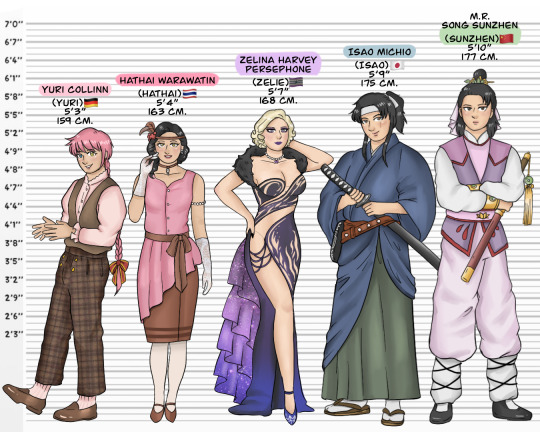

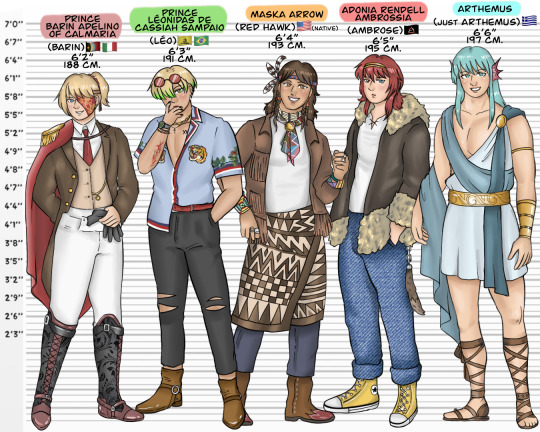
4. Prince Damond’s background story🇫🇷
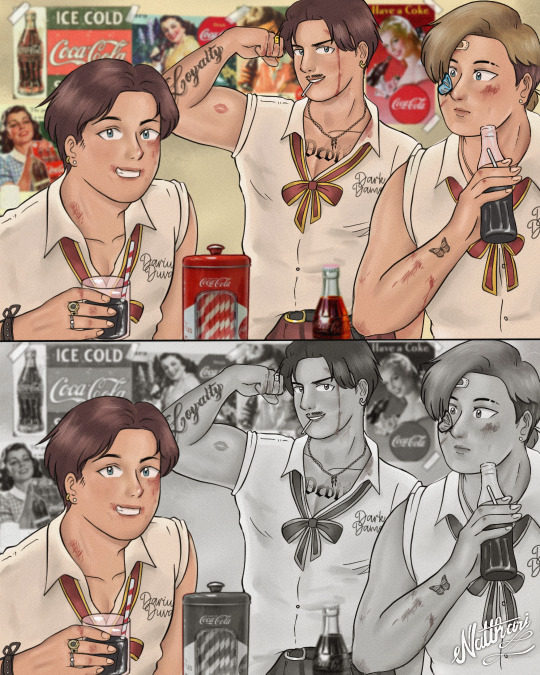
it’s about prince Damond one of Luciano member’s background story when he was alive in 1940s, he was just normal human, worked as magician and trapeze actor at Paris circus. Damond’s story has some vi0lent contens/ dark side of human’s mind. I will compare like, If that era has social media and easily to record some video, some situations gonna be on D@rk web *sorry for censoring, I'm not sure that Tumblr has a word detection system or not😑
Damond Harvey was 27 years old, has 2 brothers, Dior(24 y/o) and Darius(23 y/o). Darius married with American actress and move to America and don’t have much role in this story. 3 Harveys was adopted by mr.Henry, the owner of the Paris circus, because his biological father died when they were very young and his mother was a drunkard and physically abusive.
In each days, Damond and Dior will practice his shows with friends at Paris circus and then go to the market to help another merchants. And sometimes he and his friends must fight with enemies/ bullies from Levesque circus as well. Until one day, Harveys met Zelie(Zelina)/ Léo and Nastia(Anastasia) at flower shop, they’re prince and princess demon from Luciano dimension whose must temporary live in human dimension for months and must keep secret that they’re demons (Léo and Zelie are Lucia members, you can check their looks above at Luciano fiction). Dior is Nastia’s boyfriend and their love went well, Damond and Zelie seem get more closed but deep down Damond still scared to open-minded to has someone new, and Zelie often act stubborn(or Disagreement between heart and mouth).
Damond is depression after breaking up from his ex-girlfriend. She assaulted him and often send threatening letter to him even though she has new boyfriend already. Causing Damond doesn’t want to open-mind to another girls anymore especially Zelina who’s being model and having “femme fatale- look” just like his ex. It takes a long time for Damond to adjust understanding that Zelie is not likes his ex. And at the same time Zelina is worry about “human and demon love” between her and Damond whose don’t know that she& Léo & Anastasia are all demon from another dimension
Zelina and Léo love Damond. They want him to live together in Luciano dimension with peaceful life, with his lover, married and needn’t work dangerous career like trapeze actor. But the only way they can do is “making Damond died from human dimension first”, that is incorrect solve and sin . At the same time they must do what any decent citizen should do when seeing depression people. They must help and console Damond whose try to commit suicide after losing his little brother/ his friend and younger sister from bullies,… Leo and Zelie must choose between "what's they like" or "what's right,". And they choose what’s right, making Damond live as long as the god prescribed.
During Damond takes a break from working at Paris circus to heal his mental state from losing his younger brother and his sister’s r@ped, He t0rtured and mᵤᵣdered perpetrators . He wore a clown shirt to cover his body and lured gangsters into deserted places, and began to 𝕥o𝕣𝕥u𝕣𝕖 them one by one, and using different methods. Before those thugs 𝓭ie Damond will cut their🍆and throw it away. And when he succeeds in his plan, He would sew a doll to give to his sister at the psychiatric hospital. Arno (Child psychiatrist and later he’s one of Luciano member also) and Matty's older sister, a lawyer and youth legal adviser, were suspicious of Damond's behavior, that sometimes he requesting postponement of mental health examinations (depression). Damond looked very normal, not sad, talkative, as if nothing had ever happened.
2 notes
·
View notes